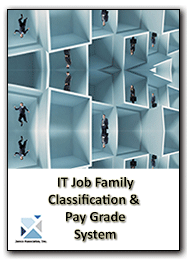Top 10 Manager Best Practices - Job Descriptions Defined
 A manager is only as good as the staff they have. Janco has identified 10 best practices that all managers can follow in order to motivate and retain their staff. These are simple things to do but have a huge impace on motivation, morale, staff retention, and productivity
A manager is only as good as the staff they have. Janco has identified 10 best practices that all managers can follow in order to motivate and retain their staff. These are simple things to do but have a huge impace on motivation, morale, staff retention, and productivity
- Greet each of your employees by name every day. Exchange a few pleasantries and show that you are happy to see them.
- Be positive and always smile
- Use an employee's name when you speak with them. Calling a person by name is one of the most basic ways to show that you respect them as an individual.
- Acknowledge employment anniversaries every year and birthdays. Make sure employees know you value their loyalty.
- At the end of the day, ask at least one employee what went well for them that day. This gives you the opportunity to give immediate reinforcement for good work.
- Complement employees for good work. Each time you compliment an employee, you are encouraging them to continue their good work and to find even better ways to get the job done.
- Ask employees for feedback. Sometimes the best recognition you can give is to simply listen.
- Show employees how much you respect them by sharing key organizational measurements with them on a regular basis.
- Share messages of praise from customers, suppliers, managers and other employees.
- When you implement a suggestion made by an employee, make sure to let their colleagues and your managers know where the great idea came from.
All of these factors are included in the Manager's Job Descriptions that Janco distributes. In addition, we provide guidance for the roles and responsibilities that individuals have. As a bonus, the job descriptions also contain a career path and all fall within the IT Job Classification System.
Sample Position Purpose
For example the the position purpose for the Manager of Systems and Programming as defined in that job description as is responsible for assisting the CIO in overseeing the programming and system management group within Information Technology. This group is responsible for system management and programming on the enterprise’s systems. Enterprise system management includes configuration, security, resource monitoring and reporting, and the development of specialized programs. Enterprise programming includes coordinating enterprise software issues with other IT organizations (i.e., applications and operations), working with other operating systems where necessary, and working with connectivity with other computer systems.
Order IT Job Description HandiGuide Sample Description Download TOC

